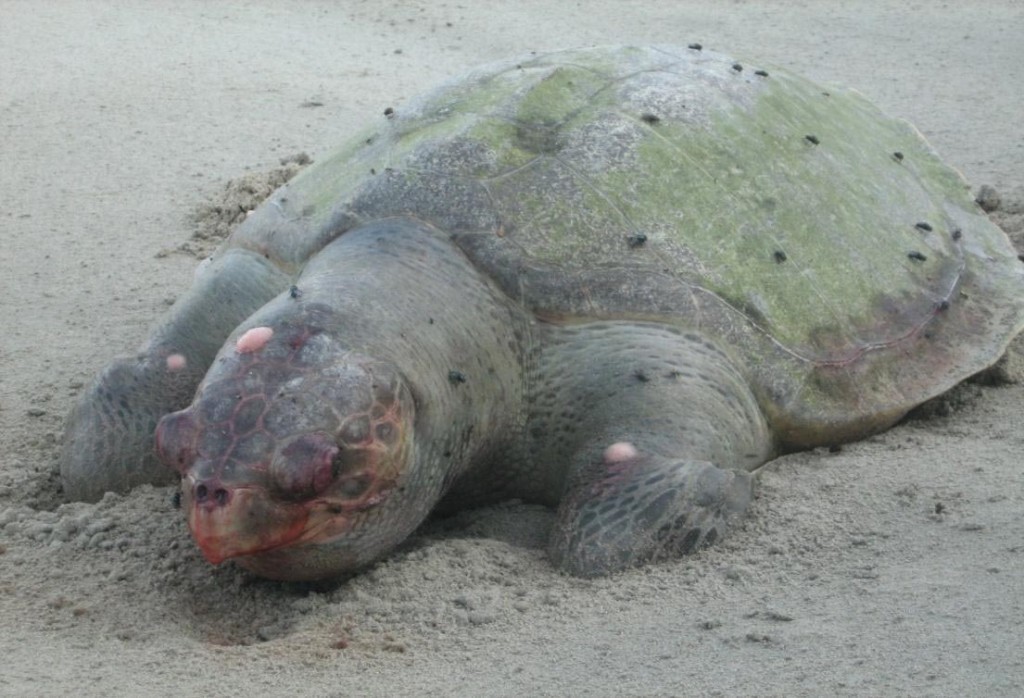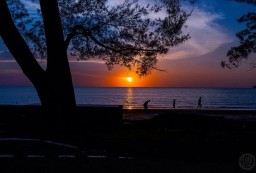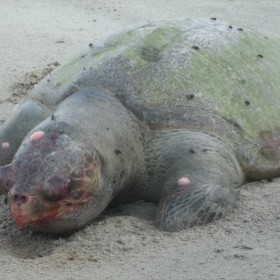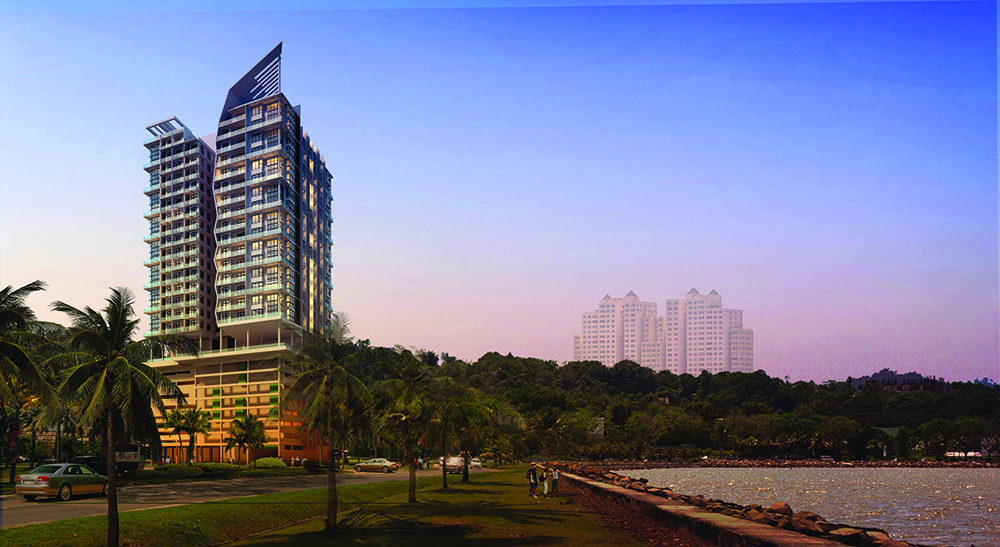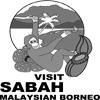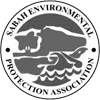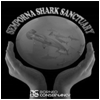Background
In 1971, De Silva reported to the International Union for Conservation of Nature (IUCN) that Green (Chelonia Mydas) and Hawksbill (Erectmochelys imbricate) turtles were coming to nest during North-East Monsoon along the beach of Kudat and Sekuati, in the northern tip of Sabah.
He reported a species locally known as “Penyu Bulu” and described it as reddish in colour and medium sized turtle; Rungus people called it “Raja Kaya” but in other areas in the same region, the coastal inhabitants called it as “Morong”. Bad weather and the inaccessibility of coastal areas in Kudat at that time prevented De Silva from going there to identify the species. We will return to the story of Morong a bit later, for now let us focus on the much more urgent issue.
Why is it at the northern tip of Sabah, less and less Green and Hawksbill and none Olive Ridley turtles coming to shore to lay eggs? De Silva (p.49) wrote some of the answers forty four years ago, the Chief Game Warden for Sandakan said following;
Native pagans in the Kudat area, still slaughter turtles for food without inhabitation and the concept of totally exploiting an easily procurable resource is ingrained…Ships of other nations hunt turtles in the sea adjacent to our territorial waters and this is impossible to control…Turtles are also frightened away from the nesting beaches by brightly illuminated fishing vessels…Finally, dynamiting of fish occurs near islands frequented by nesting turtles…Dynamiters apprehended “in flagrante delicto” empathetically denied killing turtles deliberately…However, they freely admitted that occasionally a turtle or two were killed by the force of the explosions.
Rapid declining of turtle population
The nesting records collected by Kudat Turtle Conservation Society (KTCS) and sightings by artisanal fishermen and recreational divers’ shows that Green and Hawksbill turtles in these areas are in a rapid decline.
What we are now observing is a consequence from decades of human predation. Slaughtering of marine turtles and poaching on eggs has taken its toll on the sea turtles population. Although, today, Rungus people – one of the Natives in the area, no longer slaughter it for food at least in the open, turtles are still under serious threats.
Sea turtles hit by boat engine propellers
The community patrolling teams under KTCS can only protect turtles while they are nesting and laying eggs but not before or after the landing. Once they leave the white sandy beach head back to open sea, they are in a great danger of being hit by boats engine propellers.
According to Dr. Juanita Joseph (sea turtle expert working with University Malaysia Terengganu) under water, sea turtles can hear the sound of boat engine (especially noisy pump boat) but cannot tell which direction it is coming from.
During high tide, submerged coral reefs and sea grasses which happened to be sea turtles’ foraging and habitats areas are busy navigation routes for passengers and fishing vessels. The unlucky turtle are sucked by turbulence created by spinning propellers; it will tumble, again and again being hit by the blades that caused holes or deep cut impressed on carapaces.
In fact, nine of ten dead turtles washed ashore from September 2009 until August this year (as presented in table-1) has sign of physical injuries. Most has grotesque deep cuts on either or both limbs (flippers), neck and head. While others have broken, cracked or deep scratch marks and a gaping holes on the carapace or plastron. But none of the carcasses, however, are entangled in fishing net or rope tied on its body as in a case of the dead turtles found in Semporna (picture -2) and Labuan (picture-1).
Sea turtles are incidental catch
According to previous studies on dead turtles in Peninsula Malaysia, Thailand, Indonesia and Australia, carcasses washed to shores with these types of visible marks of injuries are either victims of boat engine propellers or fishing nets.
Sea turtles caught accidentally by gill net, trammel net, drift net, trawlers and purse seine will be severely injured. Once caught in a trawl, the turtle will be drown and pushed to the back of the net, and during hours of dragging near sea bottom, the body with be crushed or squished under massive weight of shrimps and other targeted species.
This is plausible cause of badly damaged carapaces and plastrons. Some of the 654 fishermen working under 121 trawling licenses in Kudat are definitely responsible of disposing evidence, we just don’t know who and when.
The cases presented in table 1 have two more interesting trends. One is that, most carcasses were found during nesting months of May to September. Second, there are more reports during these months, of sea turtle incidentally (accidentally?) caught by trammel, gill and drift nets- three popular fishing gears used by artisanal fishermen in the areas.
Some purse seiners are doing so wrong things for so long.
The other usual suspect is some purse seiners. While almost all the trawlers fish day time, purse seines are nocturnal activities. According to KTCS patrollers, purse seiners’ encroaches into artisanal fishing ground all year round.
But during the good weather, purse seiners can be seen fishing dusk to dawn, at least eight vessels per night during dark moon and at least three vessels during full month (less fish). Most of them fish quite near to the turtle rookeries – the white sandy beaches all the way from Bak-Bak, Bavang Jamal, Kulambu up to Sampang Mengayau (tip of Borneo).
The powerful spotlights used by the purse seiner’s could scare away approaching turtles from landing. Some purse seiner crews told me, during “Ikan Banjir” (bounty harvest season), turtles returning to the sea after nesting were caught in the purse seine because they were following the food i.e. aggregation of fish attracted by the lighting.
The case against these encroachers is stronger. Not because we can find out who among the 660 fishermen working under 35 licensed purse seines in Kudat disposes dead turtles but because purse seiners are encroaching into artisanal (traditional) zone. Purse seine fishing within three nautical miles from shoreline is illegal, therefore unregulated and unreported (IUU).
On the verge of extinction

Penyu Karah (Hawsbill) according to Department of Fisheries, Labuan found dead and washed to shore wednesday 23 April 2014 at Tanjung Purun beach by Suriani, staff of Marine Museum.

Four dead Green turtles found (by Fisheries Department official Julain Jilhani) floating at sea between Bum-Bum Island and Kulapuan Island Semporna, 15 April 2014

Dead Green Turtle found at Bavang Jamal beach Friday 18, July 2014, badly damaged carapace near neck.
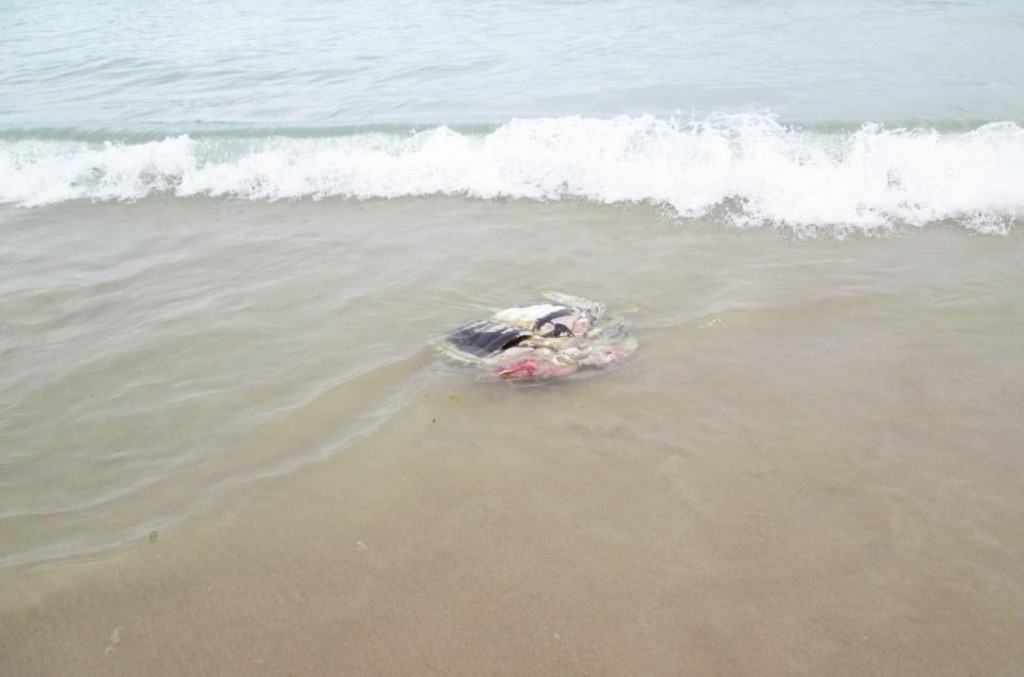
Green Turtle most of decomposing carcass was eaten by seabirds and dogs, Sampang Mengayau 4 August 2013
The Green turtle are globally listed as “Endangered” in IUCN Red list and are in Appendix 1 -CITES. The Hawksbill turtle are “Critically Endangered” according to IUCN Red list and is in the Appendix 1 –CITES. They are virtually on the verge of extinction. How soon will these Threatened, Charismatic and Migratory species ultimately disappear? The answer is “very soon” particularly when there will be more delays in the gazettement of Tun Mustapha Marine Park.
We conclude with the story of the Morong. My interviews with elders of the Ubian Bajau in Kudat and search on archival records for marine turtle trading in North Borneo, shows that “Morong” is in fact the Olive Ridley (Lepidochelys Olivacea). Today, Olive Ridley are globally “Endangered” according to IUCN Red list and listed in Appendix 1 –CITES. Sadly, in Kudat it is already extinct. In the past, according to my respondents, the Tip of Borneo was like their place of origin- village of Nagbalong in Morong town, Bataan Peninsula, Philippines where the Arribadas was found in abundance. Although Arribadas or Olive Ridley no longer in abundance nevertheless their rookeries in Morong are protected by Pawikan Conservation. The Olive Ridley turtles in Kudat were not that lucky. The only record of it existence in the areas was a carcass found washed ashore at Kulambu beach in September 2009.
Table 1 – Dead marine turtles found washed ashore in Kudat
| Date (found) | Location | Species | Description(condition of carcass when it was found according KTCS patrollers) |
| 2014/August/4 Mon Found by the WWF-Malaysia Kudat |
Maliangin island | One Green Turtle | Badly decomposing carcass. carapace is broken. Both sides of carapace severe damaged. |
| 2014/July/21 Mon | Kulambu Beach | One Green turtle | Decomposing carcass with visible injuries (deep cuts) on the head and forelimbs |
| 2014/July/18 Fri | Bavang Jamal Beach | Two Green turtles | One carcass decomposing with severe damaged /carapace are broken from neck to tail and deep scratch on carapace. Second carcass carapace broken on right forelimb, internal organs exposed and deep scratch on carapace. |
| 2014/June/20 Fri | Bak-Bak Beach | One Green turtle | Still fresh, visible deep scratch on carapace. Cracked carapace. Measurement of dead turtle= 27 inches long and 20 inches width. |
| 2014/June/19 Thurs | Bak-Bak Beach | One Green turtle | Still fresh no visible external injuries. |
| 2013/August/4 | Simpang Mengayau beach (Tip of Borneo) | One Green Turtle | Most of decomposing meat -carcass was devoured by seabirds and dogs. Cracked carapace |
| 2013/July/30 | Bavang Jamal Beach | One Green turtle | Carapace has 4cm gaping holes and big surface area with deep scratch. Head injuries. |
| 2013/July/28 | Bavang Jamal Beach | One Hawksbill turtle | 80% of carapace surface has deep scratch marks, cracked carapace |
| 2013/July/4 | Bavang Jamal Beach | One Green turtle | Edges of carapace have deep scratch marks. Injuries on the head. |
| 2009/Sept/1 | Kulambu Beach | One Olive Ridley | Visible injuries on head and limbs. Edges of carapace have scratch marks. |
Note for table 1- Except indicated, all dead marine turtles found by the patrollers working with Kudat Turtle Conservation Society. Descriptions were first given by the patrollers. All close up pictures were also sent to Dr. Juanita Joseph (Universiti Malaysia Terengganu) for species identification and for her to give an expert opinion based on visual marks and injuries of dead turtles.
Descriptions on physical injuries were not based on necropsy by the expert. Descriptions by the untrained eyes of the patrollers may be inaccurate because most carcasses were decomposing when it was found.
- James M. Alin
 This is my personal opinion and it does not reflect the official position of my generous employer- School of Business and Economics, Universiti Malaysia Sabah. I welcome all comments, ajames2000@hotmail.com, or twitter @literati43
This is my personal opinion and it does not reflect the official position of my generous employer- School of Business and Economics, Universiti Malaysia Sabah. I welcome all comments, ajames2000@hotmail.com, or twitter @literati43
Disclaimer
You are free to comment on this article using a valid Facebook account.



